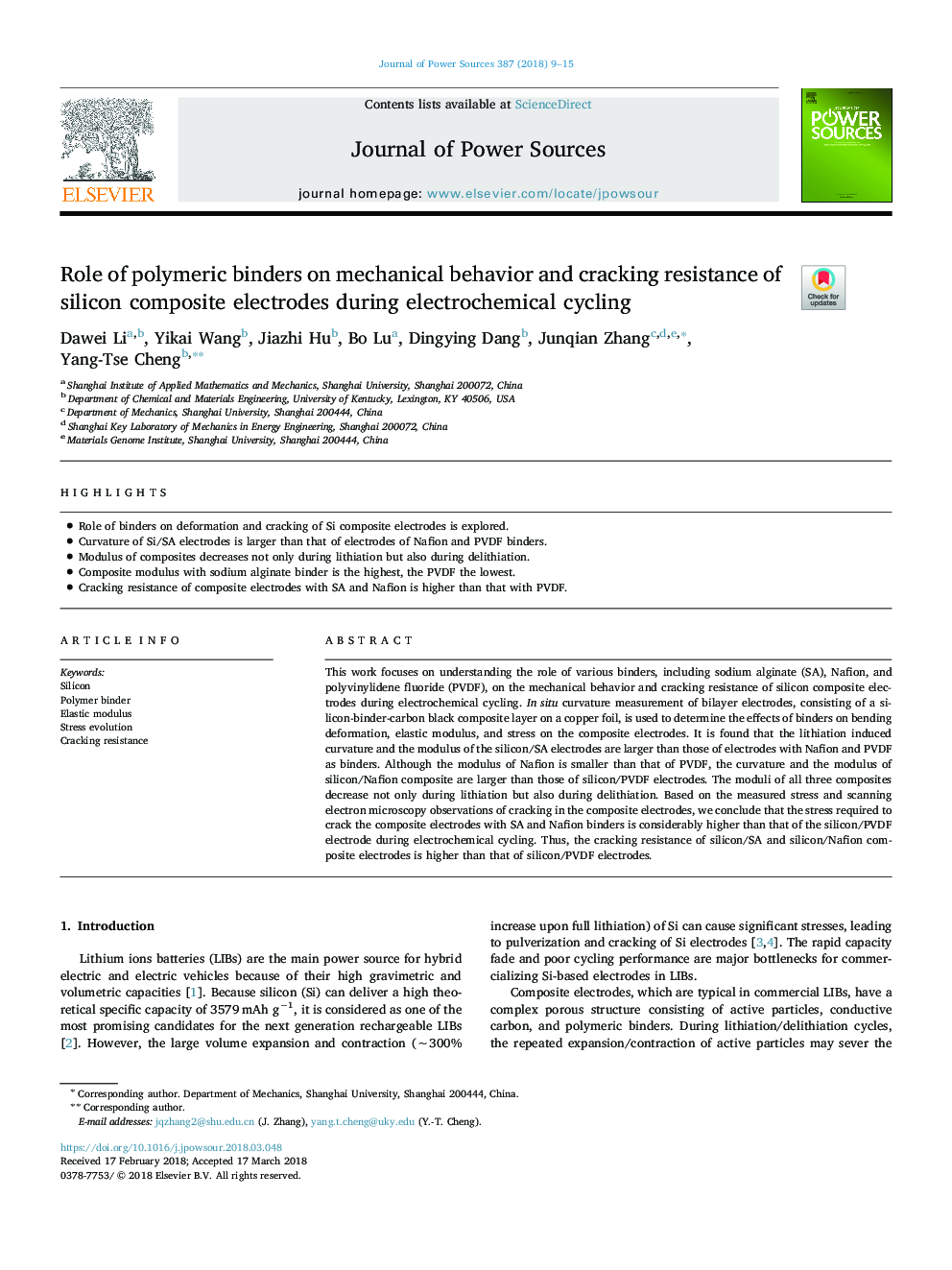| Article ID | Journal | Published Year | Pages | File Type |
|---|---|---|---|---|
| 7725244 | Journal of Power Sources | 2018 | 7 Pages |
Abstract
This work focuses on understanding the role of various binders, including sodium alginate (SA), Nafion, and polyvinylidene fluoride (PVDF), on the mechanical behavior and cracking resistance of silicon composite electrodes during electrochemical cycling. In situ curvature measurement of bilayer electrodes, consisting of a silicon-binder-carbon black composite layer on a copper foil, is used to determine the effects of binders on bending deformation, elastic modulus, and stress on the composite electrodes. It is found that the lithiation induced curvature and the modulus of the silicon/SA electrodes are larger than those of electrodes with Nafion and PVDF as binders. Although the modulus of Nafion is smaller than that of PVDF, the curvature and the modulus of silicon/Nafion composite are larger than those of silicon/PVDF electrodes. The moduli of all three composites decrease not only during lithiation but also during delithiation. Based on the measured stress and scanning electron microscopy observations of cracking in the composite electrodes, we conclude that the stress required to crack the composite electrodes with SA and Nafion binders is considerably higher than that of the silicon/PVDF electrode during electrochemical cycling. Thus, the cracking resistance of silicon/SA and silicon/Nafion composite electrodes is higher than that of silicon/PVDF electrodes.
Related Topics
Physical Sciences and Engineering
Chemistry
Electrochemistry
Authors
Dawei Li, Yikai Wang, Jiazhi Hu, Bo Lu, Dingying Dang, Junqian Zhang, Yang-Tse Cheng,
